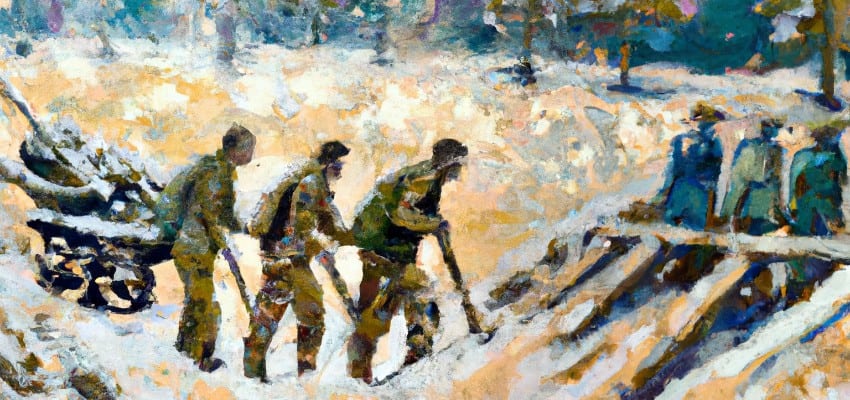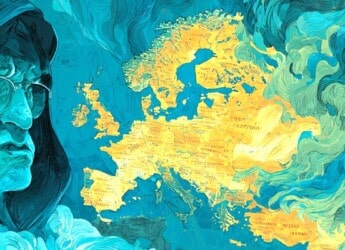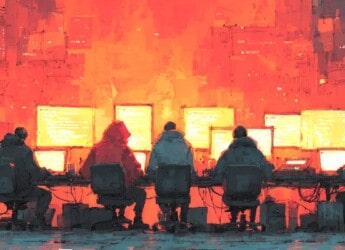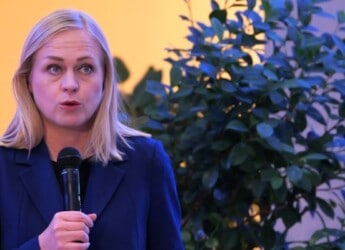|
|
Content Assessment: Digging Out and Digging In? Ukraine Conflict Assessments in Maps (November 14-20, 2022)
Information - 93%
Insight - 90%
Relevance - 90%
Objectivity - 93%
Authority - 92%
92%
Excellent
A short percentage-based assessment of the qualitative benefit of the post highlighting the recent Ukraine conflict assessments in maps from the Institute for the Study of War.
Editor’s Note: One of the most accurate and detailed sources for ongoing updates on the Ukraine crisis is the Ukraine Conflict Update from the Institute for the Study of War. The Institute for the Study of War (ISW) is a 501(c)(3) organization and produces strictly non-partisan, non-ideological, fact-based research. ISW seeks to promote an informed understanding of war and military affairs through comprehensive, independent, and accessible open-source research and analysis. ISW’s research is made available to the general public, military practitioners, policymakers, and media members. Providing a daily synthesis of key events related to the Russian aggression against Ukraine, ISW updates may benefit cybersecurity, information governance, and legal discovery professionals as they follow the business, information technology, and legal trends and trajectories impacted by and stemming from the current Ukraine conflict.
Assessment and Maps*
Ukraine Conflict Assessments – An Overview in Maps
- Institute for the Study of War (ISW), Russia Team
- Critical Threats Project (CTP), American Enterprise Institute
General Assessment Background Info
- ISW systematically publishes Russian campaign assessments that include maps highlighting the assessed control of terrain in Ukraine and main Russian maneuver axes.
- These maps augment daily synthetic products that cover key events related to renewed Russian aggression against Ukraine.
The Russian Offensive Campaign Assessments
- November 20, 2022
- By Kateryna Stepanenko, Frederick W. Kagan, and Grace Mappes
Key Development
- The Kremlin has allowed the ever-growing informal milblogger community to gain a quasi-official but independent position despite otherwise increasing domestic repression and censorship.
Key Takeaways
- Russian milbloggers are not merely cheerleaders for the war – they are emerging as a group with a distinct voice within Russia.
- The milbloggers are not fully separate from the Russian government, however.
- Select milbloggers are now holding official positions within the Kremlin.
- Some Russian milbloggers have close ties with prominent nationalist ideologists.
- Putin has likely blocked MoD attempts to purge or otherwise control the milbloggers.
- The prominence of the milblogger community is likely a direct result of the Kremlin’s failure to establish an effective Telegram presence stemming from Putin’s general failure to prepare his people for a serious and protracted war.
- The Kremlin struggles to emulate the success of Russian pro-war siloviki figures online.
- Putin continues to double down on support for the independence of milblogger reporting even as he doubles down on efforts to mobilize the Russian population for war.
- November 19, 2022
- By Kateryna Stepanenko, Grace Mappes, Angela Howard, and Frederick W. Kagan
Key Development
- Russian forces are reportedly beginning to reinforce their positions in occupied Luhansk, Donetsk, and eastern Zaporizhia oblasts with personnel from Kherson Oblast and mobilized servicemen.
Key Takeaways
- Russian forces are reportedly beginning to reinforce their positions in occupied Luhansk, Donetsk, and eastern Zaporizhia oblasts with personnel from Kherson Oblast and mobilized servicemen.
- US intelligence officials stated that Russian and Iranian officials finalized a deal in early November to manufacture Iranian drones on Russian territory.
- Ukrainian forces continued counteroffensive operations on the Svatove-Kreminna line.
- Russian forces maintained their offensive operations around Bakhmut, Avdiivka, and west of Donetsk City despite reports of high losses around Bakhmut.
- Russian forces continued efforts to fortify areas around ground lines of communication in southern Ukraine while struggling with the partial loss of the use of the Kerch Strait Bridge.
- Russian media sources continued active discussions of an impending second wave of mobilization.
- The number of Russian prisoners appears to have dropped by about 6.5% since January of 2022 likely due to intensive Wagner Group recruitment.
- Russian authorities are working to establish control over the information space in occupied territories and identify Ukrainian partisans.
- November 18, 2022
- By Karolina Hird, Grace Mappes, Madison Williams, Yekaterina Klepanchuk, and Frederick W. Kagan
Key Development
- Russian officials are preparing for further covert mobilization efforts even as the fall conscription cycle is underway, likely further flooding the already overburdened Russian force generation apparatus in such a way that will be detrimental to the development of mobilized and conscripted servicemen.
Key Takeaways
- Russian officials are preparing for further covert mobilization efforts even as the fall conscription cycle is underway, likely further diminishing the development of quality mobilized and conscripted servicemen.
- The International Atomic Energy Agency (IAEA) announced that it does not recognize the illegal Russian seizure of the Zaporizhzhia Nuclear Power Plant (ZNPP) or the illegal annexation of other occupied Ukrainian territory, a sharp escalation in IAEA rhetoric.
- Social media footage circulated on November 18 shows a Russian soldier opening fire on Ukrainians as other Russian soldiers were surrendering.
- Russian forces reinforced rear areas in Luhansk Oblast and attempted to regain lost positions as Ukrainian troops continued counteroffensive operations along the Svatove-Kreminna line.
- Russian forces continued limited ground assaults near Bakhmut and Avdiivka and in western Donetsk Oblast.
- Russian occupation officials and military leadership are seemingly increasingly concerned about subsequent Ukrainian counteroffensive operations in southern Ukraine.
- Russia continues to face exceedingly low morale and poor discipline among its forces against the backdrop of ongoing domestic backlash to partial mobilization.
- Russian occupation officials and forces continued to intensify filtration measures in Russian-occupied territories in Ukraine and to undermine the Ukrainian national identity.
- November 17, 2022
- By Karolina Hird, Riley Bailey, Yekaterina Klepanchuk, and Frederick W. Kagan
Key Development
- Russian forces conducted another massive wave of missile strikes across Ukraine on November 17. The Ukrainian General Staff reported that Russian troops launched five airstrikes and 25 cruise missile strikes at civilian infrastructure objects in Dnipropetrovsk, Odesa, Kharkiv, Zaporizhia, Dnipropetrovsk, and Mykolaiv oblasts throughout the day.
Key Takeaways
- Russian forces conducted another massive wave of missile strikes across Ukraine on November 17
- Russian forces in eastern Kherson Oblast are likely partially vulnerable to a Ukrainian interdiction campaign such as the one Ukrainian forces successfully exploited to retake western Kherson Oblast.
- Russian President Vladimir Putin signed a decree changing the composition of the Russian Presidential Council for Civil Society and Human Rights (HRC) on November 17.
- Russian sources continued to claim that Ukrainian troops are conducting counteroffensive operations along the Svatove-Kreminna line.
- Russian forces continued ground attacks around Bakhmut, Avdiivka, and southwest of Donetsk City.
- Ukrainian troops continued targeting Russian military assets and concentration areas on the east bank of Kherson Oblast and in the rear areas of Zaporizhia Oblast on November 17.
- Russian authorities continue to face discontented mobilized personnel and low morale on the front lines.
- Russian occupation officials continued to destroy Ukrainian culture in Russian-occupied territories.
- November 16, 2022
- By Karolina Hird, Riley Bailey, Grace Mappes, Madison Williams, Yekaterina Klepanchuk, and Frederick W. Kagan
Key Development
- Russian sources and proxy officials are flagrantly touting the forced adoption of Ukrainian children into Russian families.
Key Takeaways
- Russian sources and proxy officials are flagrantly touting the forced adoption of Ukrainian children into Russian families.
- Ukrainian sources continued to clarify the damage caused by the massive November 15 Russian missile strike across Ukraine.
- The Russian information space largely followed the official Kremlin framing of the missile strike on Polish territory as a Western provocation.
- Wagner Group financer Yevgeny Prigozhin is continuing to establish himself as a central figure in the pro-war ultranationalist community likely in pursuit of ambitious political goals.
- Russian sources claimed that Ukrainian forces continued counteroffensive operations in the directions of Svatove and Kreminna.
- Russian forces continued ground attacks near Bakhmut and Avdiivka, and in western Donetsk Oblast.
- Ukrainian forces continued targeting Russian forces and logistics nodes in southern Ukraine.
- Multiple reports indicate that the morale and psychological state of Russian forces in the Luhansk and Donetsk oblasts are exceedingly low.
- Russian officials continued their efforts to replace proxy officials in occupied territories with Russian officials, forcibly relocate residents, and integrate occupied areas with Russia.
- November 15, 2022
- By Kateryna Stepanenko, Riley Bailey, Grace Mappes, Madison Williams, Yekaterina Klepanchuk, and Frederick W. Kagan
Key Development
- Russian forces conducted the largest set of missile strikes against Ukrainian critical infrastructure since the start of the war.
Key Takeaways
- Russian forces conducted the largest set of missile strikes against Ukrainian critical infrastructure since the start of the war, likely using a substantial portion of their remaining high-precision weapon systems.
- Polish officials announced that a likely “Russian-made missile” landed in Poland within six kilometers of the international border with Ukraine.
- Russian military commanders reportedly ignored existing plans for offensive operations in the Vuhledar direction and committed poorly trained reinforcements to costly assaults on Pavlivka out of impatience, generating continued criticism of Russian military leadership.
- Russian officials continued to set conditions to force the International Atomic Energy Agency (IAEA) to recognize Russian control over the Zaporizhzhia Nuclear Power Plant (ZNPP) and thereby de facto recognize the Russian annexation of occupied Ukraine.
- Russians are increasingly turning to various platforms on social media to express their dissatisfaction with mobilization problems, which could ignite organized online anti-war movements in Russia.
- Russian sources claimed that Ukrainian forces continued counteroffensives in the direction of Svatove and Kreminna, and Ukrainian forces continued targeting Russian logistics to the rear of Luhansk Oblast.
- Russian forces continued ground attacks near Bakhmut, Avdiivka, and Vuhledar.
- Premature reports of Ukrainian forces capturing territory on the left bank of the Dnipro River provoked backlash in the Russian information space.
- Russian logistics routes from Crimea into southern Ukraine are likely highly degraded.
- Russian forces are continuing to supply their diminishing supplies with Belarusian military equipment.
- Russian officials continued to minimize the role of proxy officials in occupied territories in favor of Russian officials.
- November 14, 2022
- By Kateryna Stepanenko, Karolina Hird, Layne Philipson, Angela Howard, Yekaterina Klepanchuk, Madison Williams, and Frederick W. Kagan
Key Development
- The Russian Ministry of Defense (MoD) escalated claims of Russian territorial gains in Donetsk Oblast on November 13 and 14, likely to emphasize that Russian forces are intensifying operations in Donetsk Oblast following withdrawal from the right bank of Kherson Oblast.
Key Takeaways
- The Russian Ministry of Defense (MoD) escalated claims of Russian territorial gains in Donetsk Oblast on November 13 and 14, likely to emphasize that Russian forces are intensifying operations in Donetsk Oblast following their withdrawal from the right bank of Kherson Oblast.
- Russian milbloggers seized on Ukrainian President Volodymyr Zelensky’s November 14 visit to Kherson City to criticize Russian military capacity more substantively than in previous days during the Russian withdrawal from the right bank of Kherson Oblast.
- Wagner Group financier Yevgeniy Prigozhin continues to establish himself as a highly independent, Stalinist warlord in Russia, becoming an even more prominent figure within the nationalist pro-war community.
- Ukrainian forces continued counteroffensive operations on the Svatove-Kreminna line and clashed with Russian troops near Bilohorivka.
- Russian forces unsuccessfully attempted to regain positions in northeastern Kharkiv Oblast.
- Russian forces intensified offensive operations in Donetsk Oblast and claimed to have gained territory around Bakhmut and southwest of Donetsk City.
- Russian sources claimed that Ukrainian troops launched an unsuccessful raid onto the Kinburn Spit.
- Russian President Vladimir Putin signed additional decrees refining mobilization protocols and expanding military recruitment provisions, likely in an ongoing effort to reinforce Russian war efforts.
- Russian occupation officials continued to drive the “evacuation” and forced relocation of residents in occupied territories and took efforts to move occupation elements farther from the Dnipro River.
We do not report in detail on Russian war crimes because those activities are well-covered in Western media and do not directly affect the military operations we are assessing and forecasting. We will continue to evaluate and report on the effects of these criminal activities on the Ukrainian military and population and specifically on combat in Ukrainian urban areas. We utterly condemn these Russian violations of the laws of armed conflict, Geneva Conventions, and humanity even though we do not describe them in these reports.
Chronology of Maps from November 14-20, 2022 – Mouseover to Scroll
Ukraine Conflict Maps - 111422-112022See the Institute for the Study of War Interactive Map of the Russian Invasion
Read the latest Ukraine Conflict updates from the Institute for the Study of War
* Shared with direct express permission from the Institute for the Study of War (ISW).
About the Institute for the Study of War Research Methodology
ISW’s research methodology relies on both primary and secondary sources, enabling researchers to develop a comprehensive understanding of the situation on the ground. In order to analyze military and political developments in any given area, ISW’s research analysts must wholly understand the systems of enemy and friendly forces. They must also understand the population demographics, physical terrain, politics, and history of that area. This lays the analytical foundation for understanding the reasons for particular developments and fulfilling their assigned research objectives. ISW analysts also spend time in places like Iraq, Afghanistan, and elsewhere in order to gain a better understanding of the security and political situation and to evaluate the implementation of current strategies and policies. Our researchers compile data and analyze trends, producing a granular analysis of developments in areas of research, producing an accurate, high-resolution, timely, and thorough picture of the situation. ISW’s research methodology guarantees its success and commitment to improving the nation’s ability to execute military operations, achieve strategic objectives, and respond to emerging problems that may require the use of American military power.
About the Institute for the Study of War
The Institute for the Study of War advances an informed understanding of military affairs through reliable research, trusted analysis, and innovative education. We are committed to improving the nation’s ability to execute military operations and respond to emerging threats in order to achieve U.S. strategic objectives. ISW is a non-partisan, non-profit, public policy research organization.
Learn more, get involved, and contribute today.
Additional Reading
- [Annual Update] International Cyber Law in Practice: Interactive Toolkit
- Data Embassies: Sovereignty, Security, and Continuity for Nation-States
Source: ComplexDiscovery



























